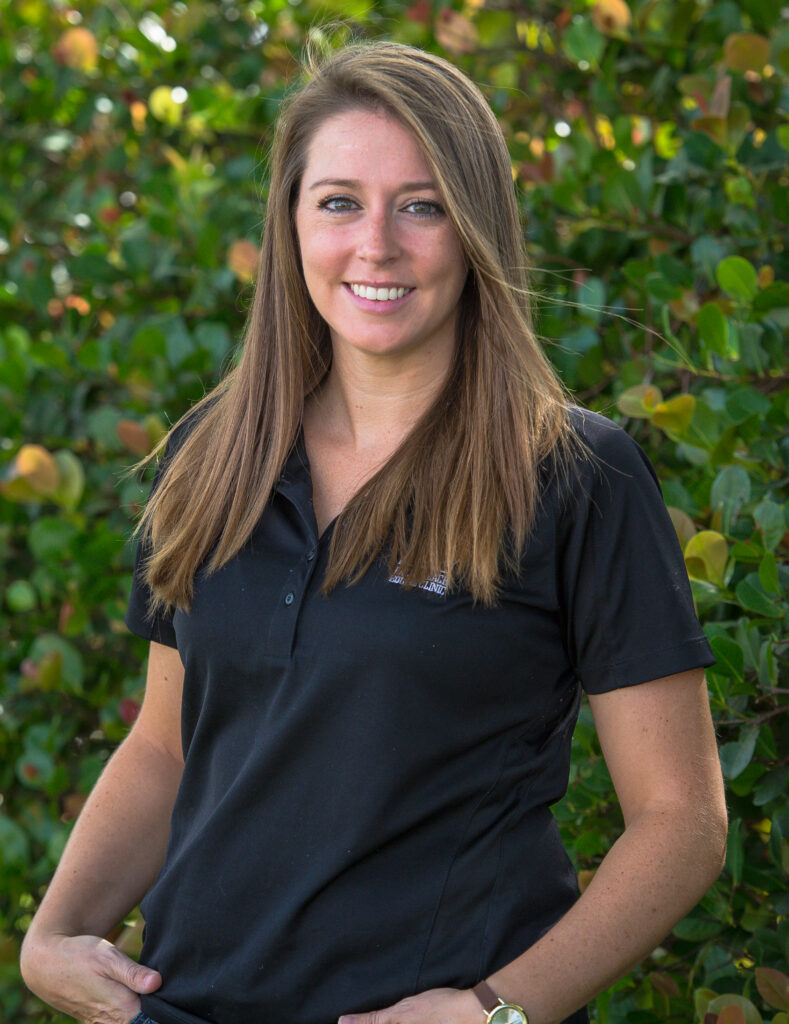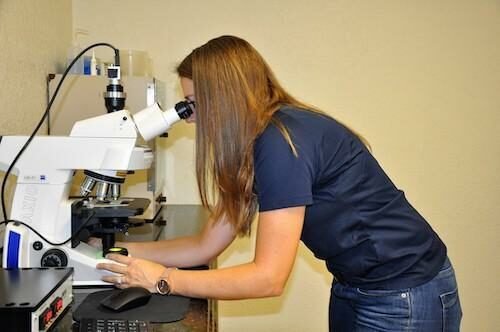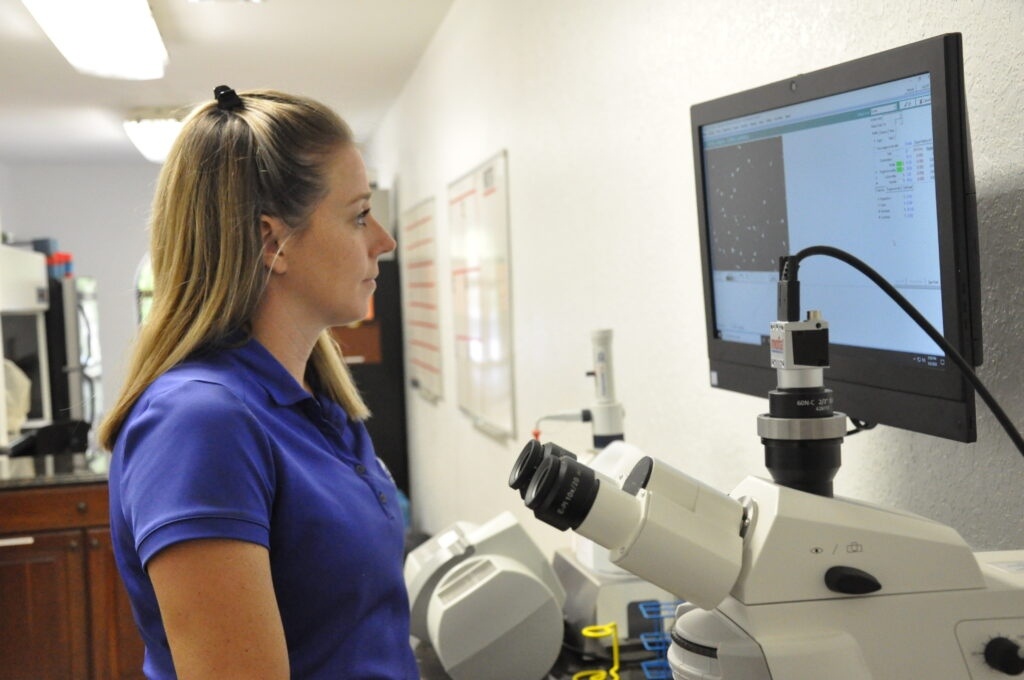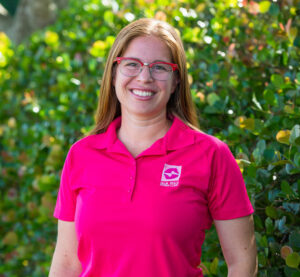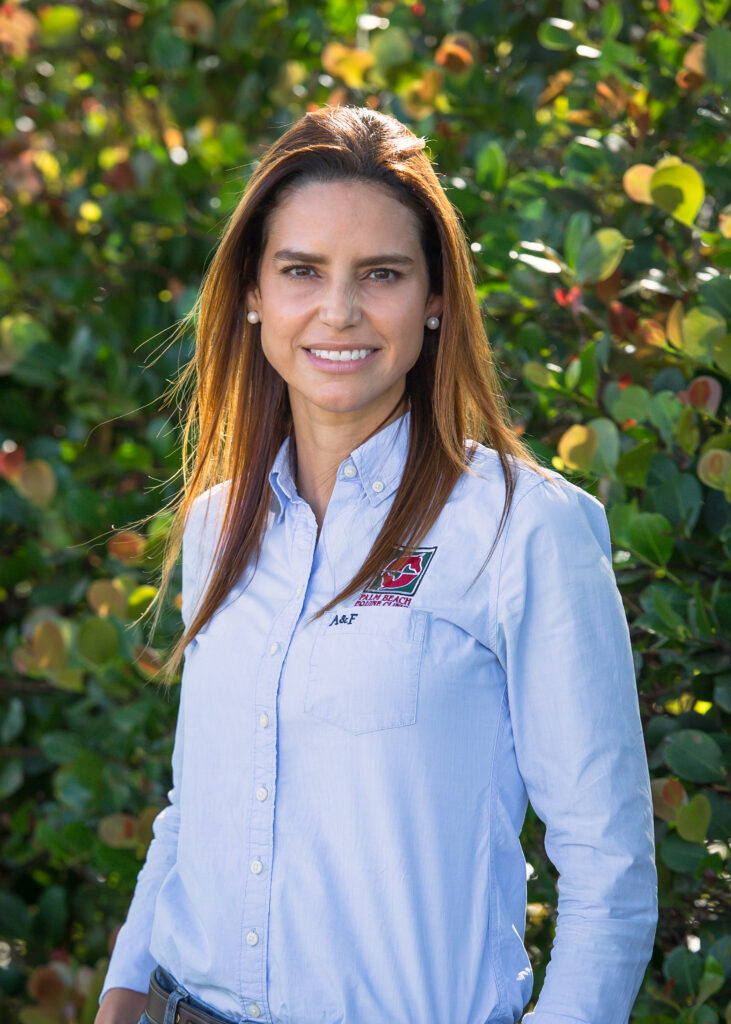Year: 2019
The process of breeding sport horses is ever-changing. Whether in an effort to produce the healthiest, most talented foals, to prolong the competition career of a mare, or make the most of a stallion’s longevity, reproductive science in horses has come a long way from the days of the traditional breeding shed.
Dr. Katie Atwood is a member of the Palm Beach Equine Clinic team, based in Wellington, FL, with a passion for reproductive work. She has used that passion to help Palm Beach Equine Clinic offer cutting edge breeding options all in the heart of the winter equestrian capital of the world.
“I like the creating of life,” said Dr. Atwood, who is a Florida native and University of Florida graduate and currently pursuing steps to become a board-certified reproductive specialist. “Equine medicine is intriguing, but you’re dealing with sick, unhealthy animals. With reproduction, I am working with healthy animals and making their babies, which I love!”
The Future of Breeding at Palm Beach Equine Clinic
PBEC is a one-stop shop for anyone’s breeding needs, whether it’s a champion polo pony, competing mare, or full-time breeding stallion. Atwood and the team at Palm Beach Equine Clinic work tirelessly to improve their offerings, which currently include a breeding shed covered from the heat and inclement weather just like an indoor arena. Inside the breeding shed, Palm Beach Equine Clinic houses a hydraulic phantom mare.
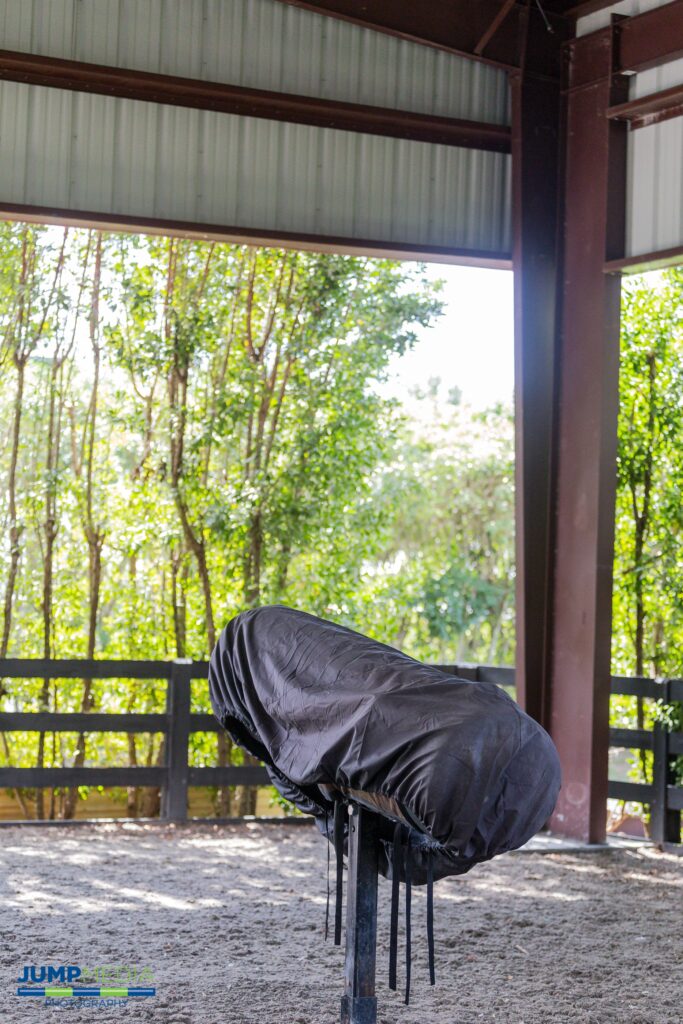
“We can raise or lower our phantom with the push of a button so it can be the appropriate height for the stallion,” said Dr. Atwood. “Previously, we had to bring a tractor in to raise and lower the phantom. We also do not have to take weather into consideration anymore now that the breeding shed is covered. There is enough space and privacy for safe and convenient breeding on-site at Palm Beach Equine Clinic.”
Additionally, Palm Beach Equine Clinic incorporates the use of a SCA® CASA (computer assisted sperm analyzer) system into their reproduction work. An excellent way to improve quality control of a stallion’s sperm, the system evaluates sperm motility (velocity and type of movement), concentration (sperm count), morphology (sperm shape), DNA fragmentation (counting of fragmented sperm), vitality (live and dead count) and acrosome reaction, which is what ultimately allows the sperm to penetrate the egg.
From on-site experience to computer technology, Palm Beach Equine Clinic offers Dr. Atwood the opportunity to be at the forefront of equine reproduction, a place she has always strived to be.
“I wanted to come into a practice that had a developed program in place, but what is even more important to me is mentoring and teaching my technicians and clients about reproduction,” she said. “It is so important to make sure these techniques are shared and promoted for the continued success of veterinarians, owners, and most of all the horses.”
What is Embryo Transfer?
The most popular wave of advancement that has hit the horse sport industry over the past several years is the process of embryo transfer.
Embryo Transfer Process:
- A donor mare and stallion, who hold the genetics of the future foal, are bred.
- At seven or eight days of pregnancy, the embryo is flushed out.
- A catheter is placed through the vagina and cervix, and an inflatable cuff on the catheter provides a fluid-tight seal.
- A lavage fluid with surfactin (added to reduce the “stickiness” of the embryo and allow it to be extracted easily) passes down through a tubing system into the uterine lumen. As the fluid swirls throughout the lumen and drains back out through gravity, it collects the embryo, which is swept back out. The fluid and embryo pass out through the tubing system into and through an embryonic filter.
- When the embryo is identified under a microscope, it is removed into a more enriched medium until the time of transfer.
- The embryo is shipped to a recipient farm where a young and healthy surrogate mare of decent size receives the embryo. That mare carries the foal to term, but it is genetically created from the donor mare and stallion.
Why Breed Through Embryo Transfer?
While the process is fascinating, some may wonder why it’s necessary. According to Dr. Atwood, it relieves much of the concern owners have about sport horse breeding.
Advantages for Mares
“The gestation period for a horse is 11 months, so you’re only getting one foal per year when you breed traditionally,” she said. “This allows a mare to produce multiple foals per year, but it also allows that mare to remain in competition. This process can be done on younger mares with no interruptions to their competition and training schedules.”
Horses are now being bred at an ideal reproductive age while they are still in training, which is made even more valuable by the fact that advances in equine science has prolonged the longevity of horses. While 16 or 17 was once the age of an older horse, now it’s commonly seen as the age when horses are winning in the show ring. Thanks to embryo transfer, these horses can enjoy longer, healthy careers and still produce the talent of the future.
Dr. Atwood has seen embryo transfers become popular in dressage and polo, but she has begun to see it span all disciplines, saying, “At the start of the season, I had one farm and a few mares, but now it has quickly grown to several farms with multiple mares at each. It is really taking off because people now realize it does not remove their mares from competition.”
Advantages for Stallions
The process not only keeps mares competing, but it allows stallions to cross continents. Frozen fertilized embryos from working polo ponies in the U.S. are now being shipped to Argentina where they are carried by mares and then trained by some of the best polo trainers in the world. On the flip side, semen can also be frozen and shipped to the U.S.
“Stallions are collected, the semen is placed with an extender and high nutrient base so the sperm has something to use for energy, and then cooled slowly until it is frozen in liquid nitrogen,” said Dr. Atwood. “Once frozen, it is theoretically good forever. Last year, I bred a mare with 1991 semen and she was successfully pregnant!”
Chinese herbal medicine is a relatively new treatment among equine veterinarians in the western world, but the philosophy of herbals for healing has existed for thousands of years as part of Traditional Chinese Veterinary Medicine (TCVM). Helping to lead the Chinese herbal medicine charge westward, veterinarians at Palm Beach Equine Clinic (PBEC) have incorporated the use of herbs and herbal treatments as an integral part of their alternative therapy options for patients.
Similar to the use of all-natural methods to treat illness in humans, herbal medicine for animals also utilizes ancient Chinese formulas aimed at treating the underlying causes of a disease or illness to help the body heal itself, rather than only temporarily treating the presented symptoms.
One PBEC veterinarian who has found these all-natural methods as a benefit in her treatments is Dr. Janet Greenfield-Davis, who specializes in both acupuncture and Chinese herbal medicine.
“There is an herbal product for anything,” said Dr. Greenfield-Davis, who found herbal medicine six years ago when she started specializing in acupuncture, which joins Chinese herbal medicine as two of the most common forms of TCVM therapies. “Herbals treat a variety of ailments from sore muscles to problems affecting the liver, heart, kidneys, joints, and more. I pair the herbals with my acupuncture, which is traditionally the ancient Chinese way.”
Traditional Chinese Veterinary Medicine (TCVM) Methods

In TCVM, once a symptom of disharmony in the body or disease is identified, treatment proceeds through four possible branches, including acupuncture, food therapy, a form of Chinese medical massage called Tui-na, and Chinese herbal medicine. From topical treatments, including salves and powders, to edible treatments, Chinese herbal medicine not only draws on natural products, but also on the natural tendencies of the horse itself. Being herbivores, horses ingest herbs found in the wild while they are grazing.
While the traditional methods date back thousands of years, the treatments developed within Chinese herbal medicine are ever-evolving. Coupled with modern technology, historical and ancient Chinese wisdoms are still very effective. In addition, the treatments utilize the properties of many common herbs with widely known uses. By utilizing ginseng for fatigue, chamomile for calming, garlic as an antibiotic, and arnica as an anti-inflammatory, the recipes used in herbal medicine draw from only natural sources. This is making herbal treatments more common among sport horses that undergo drug testing for banned substances while competing.
“The competitive world is accepting herbal medicine more and more every year,” said Dr. Greenfield-Davis. “It provides an alternative for horses at high levels, especially in FEI classes, that need a little extra support. They aren’t drugs, they don’t test, and they are a natural product.”
Alternative Options
Dr. Greenfield-Davis believes that offering such alternative treatment options is a sizeable advancement for PBEC, in that herbal medicines provide owners with another option when traditional western medicines may not be their preference.
“It enhances our practice because it gives owners a place to turn,” she said. “There is a lot of stigma to using particular western drugs, and I think this gives people a choice; they don’t have to use the traditional western medicines anymore because they can now turn to eastern medicines.”
While it is a personal choice to use a more holistic or all-natural approach to veterinary care for some horse owners, herbs also represent a practical alternative. According to Dr. Greenfield-Davis, herbal medicine is the perfect choice when treating a horse with an aversion to needles, or for horses that do not respond to particular medicines or therapies.
“We are able to work in a more natural way instead of using steroids and things of that nature,” added Dr. Greenfield-Davis. “In some cases, I will use solely herbals and the treatments produce a lot of wonderful results.”
As PBEC continues to advance its alternative medicine therapies, the equestrian community is also learning to accept new possibilities. For PBEC and Dr. Greenfield-Davis, Chinese herbal medicine is a step into the future with a nod to ancient Chinese history.
About Dr. Janet Greenfield-Davis
Dr. Greenfield-Davis grew up in Northern California, and her passion for horses started during her time showing hunters on the “A” circuit, which later led her to study veterinary medicine at California Polytechnic State University. She graduated from veterinary school at the University of Glasgow in 2010 and has since specialized in equine acupuncture and herbal medicine. Dr. Greenfield-Davis hopes to continue her studies in holistic medicine by incorporating food therapy into her treatments at Palm Beach Equine Clinic.
Palm Beach Equine Clinic veterinary technician Morgane Qualls was interviewed by the Winter Equestrian Festival staff for their Amateur Athlete of the Week on February 6, 2019. Morgane works closely with Dr. Ryan Lukens and competes with her horse Paddy in the 1.30m jumpers. Learn more about her by reading the article here.

Palm Beach Equine Clinic (PBEC), based in Wellington, FL, is home to world-renowned surgeons, board-certified specialists, and state-of-the-art diagnostic technology. In addition, PBEC is home to over 30 veterinary technicians who provide comprehensive support to the veterinarians they work alongside.
PBEC takes pride in the diligence of the technicians who work in collaboration with the veterinarians to maintain the daily functionality of the clinic.
The typical responsibilities of an equine veterinary technician include:
- Manage veterinarians’ schedules
- Stock veterinarians’ mobile unit with supplies, equipment, and medications
- Accompany veterinarians on barn calls and emergency response
- Consult on cases with a veterinarian
- Care for and monitor horses admitted to the on-site clinic hospital
- Plan patient care and follow-up
- Oversee billing and invoices
According to Dr. Marilyn Connor, veterinary technicians are the right hands of the doctors they work with. PBEC employs over 30 technicians and the hands-on experience they have access to gives them invaluable opportunities to learn.
“One thing that is special about PBEC is that we have a full staff of technicians day and night,” said Dr. Connor, who first joined PBEC as an intern and now works as a full-time veterinarian. “They are the ones feeding and caring for horses, administering medications that do not require a doctor, and assisting veterinarians on cases. During the peak of the season, there are roughly 40 doctors with very diverse caseloads for technicians to learn and gain experience from.”
Yessica Arrua is one PBEC technician who has become an accomplice for veterinarian Dr. Natalia Novoa and the clinic in general. Arrua, 22, was born in Buenos Aires, Argentina, but now calls Florida home and is a pivotal part of the PBEC team.
5 Questions for Palm Beach Equine Clinic Yessica Arrua
1. How did you first get involved with horses?
I have been around horses since I was three years old. Both my parents have been working with horses since before I can remember. My dad works with polo ponies and my mom with dressage horses. They both traveled to Florida to pursue work with horses here and that is how I came to be a resident of Wellington and a team member with Palm Beach Equine Clinic.
2. What are your day-to-day responsibilities at PBEC?

I work with Dr. Natalia Novoa, who focuses on both traditional veterinary medicine and alternative therapies like chiropractic adjustments and acupuncture. My day-to-day responsibilities include making sure our truck is stocked with the equipment and medications that we may need. I also look after all the invoices in our system on a monthly basis. Overall, my role is to ensure Natalia has everything she needs and is prepared for our farm call visits.
3. What do you enjoy most about working with equine veterinarians and the horses they treat?
Other than being around horses every day, which is the best part of my job, I really enjoy being able to experience all the different types of cases that come through Palm Beach Equine Clinic. Especially during the winter season, we see so many interesting cases from emergencies to routine exams.
4. Do you have a favorite case?
My favorite cases to work on are the ones where horses have anhidrosis, which we see often in the Florida heat.
There is no universal or proven treatment for anhidrosis, but people often try salts, electrolytes, thyroid supplements, and even beer. But, Dr. Novoa has been able to help these horses with acupuncture. We had one case where the horse didn’t respond to any traditional treatments but started sweating right away during our first acupuncture treatment.
What is Anhidrosis? According to the American Association of Equine Practitioners (AAEP), anhidrosis is a compromised ability to sweat in the face of exercise or high ambient temperatures. This is a potentially dangerous condition for horses, especially working horses, because they thermoregulate (maintain a consistent body temperature) primarily through sweating.
5. What can we find you doing when you aren’t working at PBEC?
You will find me at the beach, reading, and spending time with my family!
Palm Beach Equine Clinic combines the best of conventional and alternative medicine to provide comprehensive, full-body care to both sport and companion horses. Dr. Natalia Novoa specializes in utilizing the best of both approaches to provide unmatched results.
“I believe that treating issues with both alternative therapies and conventional medicine is a perfect approach,” said Dr. Novoa, who has been a full-time member of Palm Beach Equine Clinic since 2011. “We can’t exchange one for other, and the combination usually makes for a great treatment plan.
“A chiropractic adjustment is an alternative therapy that I absolutely recommend,” continued Dr. Novoa. “It’s very useful for a horse that has injuries or soreness issues, but it’s also something that is very important for maintenance. You want to prevent problems instead of treat them. If a misalignment happens, that creates incorrect friction, which then leads to pain in the joints, muscle soreness, and stress on the tendons and ligaments, possibly leading to a soft tissue injury. Another advantage of chiropractic adjustments is that it is useful for FEI competition horses because of the restriction on medications at that level. It’s a way we can effectively treat a problem and stay within the regulations.”
According to Dr. Novoa, veterinarians who incorporate chiropractic adjustments in their treatment options do so with their own style. She has developed a system that she finds most effective, and her secret is out!
Dr. Novoa’s five steps to a chiropractic adjustment:
1. Horse History
Patient history is a pillar of medicine, which provides pivotal information.
“I always want to speak with riders, trainers, and grooms to get an understanding of what they feel and see,” said Dr. Novoa. “They spend the most time with the horse and know it the best. Sometimes, clients ask me to evaluate the horse first and tell them what I see and feel, which is when most people ask me if I have a crystal ball.”
While Dr. Novoa doesn’t travel with a crystal ball, her skill at reading a horse leads her to the second step.
2. Scan Acupuncture Points – “Acuscan”
A scan of the acupuncture points on a horse, which Dr. Novoa calls an “acuscan,” is always her next move. She checks the main acupuncture points from head to tail by using her tool of choice – the round end of a needle cap. This allows her to put firm pressure on a very specific point and then evaluate the horse’s reaction to that pressure.
“A reaction can indicate, for example, left front lameness or a sore neck, etc.,” said Dr. Novoa. “It’s not voodoo; you are piecing together your findings in the exams with the symptoms that the horse is presenting.”
3. Evaluate Horse Movement
After scanning the horse, Dr. Novoa likes to always see the horse move to dig deeper into any reactions she noticed while checking acupuncture points. She starts at the walk and then observes at the trot.
“This is where I incorporate conventional medicine and supplement my evaluation with flexion tests or hoof testers depending on what I see,” said Dr. Novoa. “I want to produce the most detailed picture before moving on to the adjustment.”
4. Make the Adjustments
“I adjust a horse the same way every time,” said Dr. Novoa. “This specific order ensures that I don’t miss anything and the horse receives a thorough adjustment of its entire body with special attention paid to any problem areas that I uncovered earlier in the process.”
Check and adjust these 10 points:
Point 1: TMJ (temporomandibular joint)
Point 2: Poll and neck
See fig. 1 & 2
Point 3: Front limbs, including lower limb joints and carpus (knee)
See fig. 3
Point 4: Shoulder and scapula on both sides to compare one with the other
Point 5: Withers
Point 6: Pelvis and back
See fig. 4




Point 7: Hind limbs, including hocks and stifles
Point 8: Sternum and T1/T2 vertebrae
Point 9: Tongue release
Point 10: Myofascial release if muscles spasm or a tense back and neck are indicated
5. Secondary Acupuncture Point Scan
“The final piece of the puzzle is to scan the acupuncture points again to compare what we had before versus what we have after the adjustment,” said Dr. Novoa. “If there are still reactions, I may do acupuncture or electro-acupuncture and utilize a class four regenerative laser.”
After her secondary scan, Dr. Novoa formulates a short and long-term treatment plan. In her experience, adjustments last for four to six weeks before a follow-up adjustment is indicated. If certain chronic injuries are flaring up, a horse may need an earlier follow-up.
“It’s all about listening to the horse. They will always tell you what they need; you just have to listen!”
Dr. Novoa
